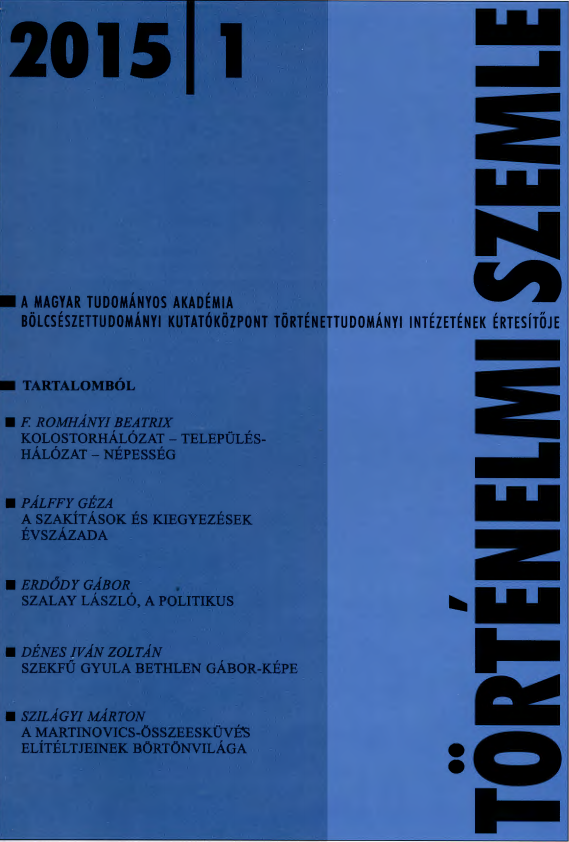Szekfű Gyula Bethlen Gábor-képe
Gyula Szekfű’s Image of Gábor Bethlen
Author(s): Iván Zoltán DénesSubject(s): Geography, Regional studies, Political history, 16th Century, 17th Century
Published by: Magyar Tudományos Akadémia Bölcsészettudományi Kutatóközpont Történettudományi Intézet
Keywords: Gyula Szekfű; Gábor Bethlen; history of Hungary; monograph;
Summary/Abstract: The monography of Gyula Szekfű (1883–1955) about Gábor Bethlen, prince of Transylvania (1613–1629), and his history of Hungary in the 16th and 17th centuries, which formed a part of the History of Hungary written together with Bálint Hóman, appeared almost simultaneously in the late 1920s. Part of the echo made by his Bethlen monography reminded Szekfű of the similar scandal once caused by his book on the exiled Ferenc II Rákóczi (1913), while the current interpretations reduced the Bethlen-debate to the polemic between Gyula Szekfű and István Rugonfalvi Kiss. If one follows this interpretation, one is bound to adopt the opposition between the erudite scholar (that is, Szekfű himself) and the nationalist demagogue which Szekfű himself used in accounting for the trouble stirred up by his book, an opposition which shadows both the variety and manifoldedness of the book’s reception and the very content and context of it. The major professional authorities in the second half of the 19th century and the first decades of the 20th, like Sándor Szilágyi, Dávid Angyal, Henrik Marczali and Árpád Károlyi, mainly accepted the self-image refl ected by Bethlen himself: the view of a prince who developed Transylvania into a factor of European politics, and successfully balanced between the Habsburg and Ottoman Empires; by occasionally playing the two against each other, he could emerge in the face of foreign absolutism as the champion of Hungarian constitutionalism and liberty, and the protector of religious liberty against CounterReformation. It was not primarily on the exploration and analysis of new source material that Szekfű based his reinterpretation of the personality and role of Bethlen; rather, he used the interpretational network provided by the notion of raison d’état elaborated by Friedrich Meinecke to refute the traditional view of Bethlen which, from his standpoint, was merely a projection of the modern conceptions of liberty and religious tolerance into the past and thus both ahistorical and outdated. According to Szekfű, European politics in the 17th century was determined by pure interests of power and the need to establish the absolutist state. It was exactly such an absolutist state that Bethlen constructed in Transylvania, oppressing the local estates (rendek, Stände), and was consequently neither an external supporter of Hungarian constitutional liberty nor an implanter of religious freedom. The latter he merely used, like so many among his contemporaries, as a point of reference, in order to make his own interests prevail without any limitation. Far from struggling for the liberation of Hungary from the Ottoman yoke, he consolidated the existence of the principality of Transylvania as a buffer state created by the Ottomans from the parts of the Hungarian Kingdom that became the very means of maintaining political division. Instead of reestablishing the nation’s integrity, he further intensified the conflict between the principles of east and west within the national community. This view adopted the very arguments and accusations used by the contemporaries of Bethlen himself to discredit him as a shamefully selfish, manipulative and reckless Ottoman vassal. These accusations were contested from several directions and on varying intellectual level, and later Szekfű himself reformulated his view.
Journal: Történelmi Szemle
- Issue Year: 2015
- Issue No: 01
- Page Range: 97-120
- Page Count: 24
- Language: Hungarian

